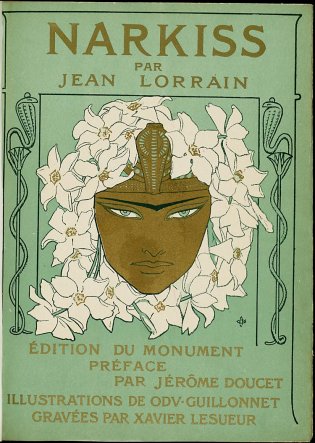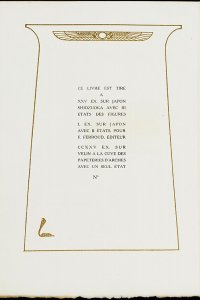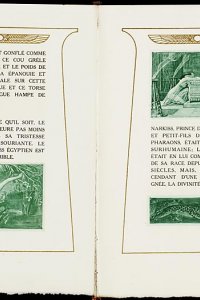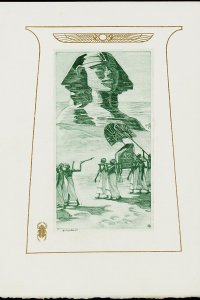Narkiss
Year: 1908
Author: Jean Lorrain (1855 - 1906)
Artist: O.D.V. Guillonnet (1872 - 1967)
Publisher: Édition du Monument
Two copies
During Lorrain's lifetime, only three bibliophile editions of his work were published: La Mandragore (Pelletan, 1899), Ma petite ville (Éditions d'art, 1898) and La princesse sous verre (Tallandier, 1896)- the first two titles are part of the Koopman Collection. Narkiss was published by Fernand Ferroud, of publisher Édition du Monument, in 1908. The National Library of the Netherlands owns one of the 50 copies of this book that were printed on Japanese paper (nr. 18) with 2 states of each illustration, all of which was bound in leather by René Kieffer, who added special decorations to the inside of the cover and the endpapers (request number for this copy: 1771 D 3). The copy in the Koopman Collection however is one of the regular copies printed on Arches paper.
Bibliographical description
Description: Narkiss / Jean Lorrain ; dessins de O.D.V. Guillonnet, grav. par X. Lesueur ; préface de J. Doucet. - Paris: Édition du Monument, 1908.- [78] p. : ill. ; 25 cm
Printer: La Semeuse (Paris)
Edition: 300 exemplaren
This copy: Eén van de 225 ongenummerde exemplaren op Arches
Bibliography: Mahé II-703 ; In liefde verzameld-99
Shelfmark: KW Koopm B 463
References
- Pierre Léon Gaulthier, Jean Lorrain: la vie, l’oeuvre et l’art d’un pessimiste à la fin du XIXe siècle. Paris, Lesot, 1935
- Philippe Jullian, Jean Lorrain ou Le satyricon 1900. Paris, Fayard, 1974
- Mario Praz, Lust, dood en duivel in de literatuur van de Romantiek. Amsterdam, Agon, 1990






